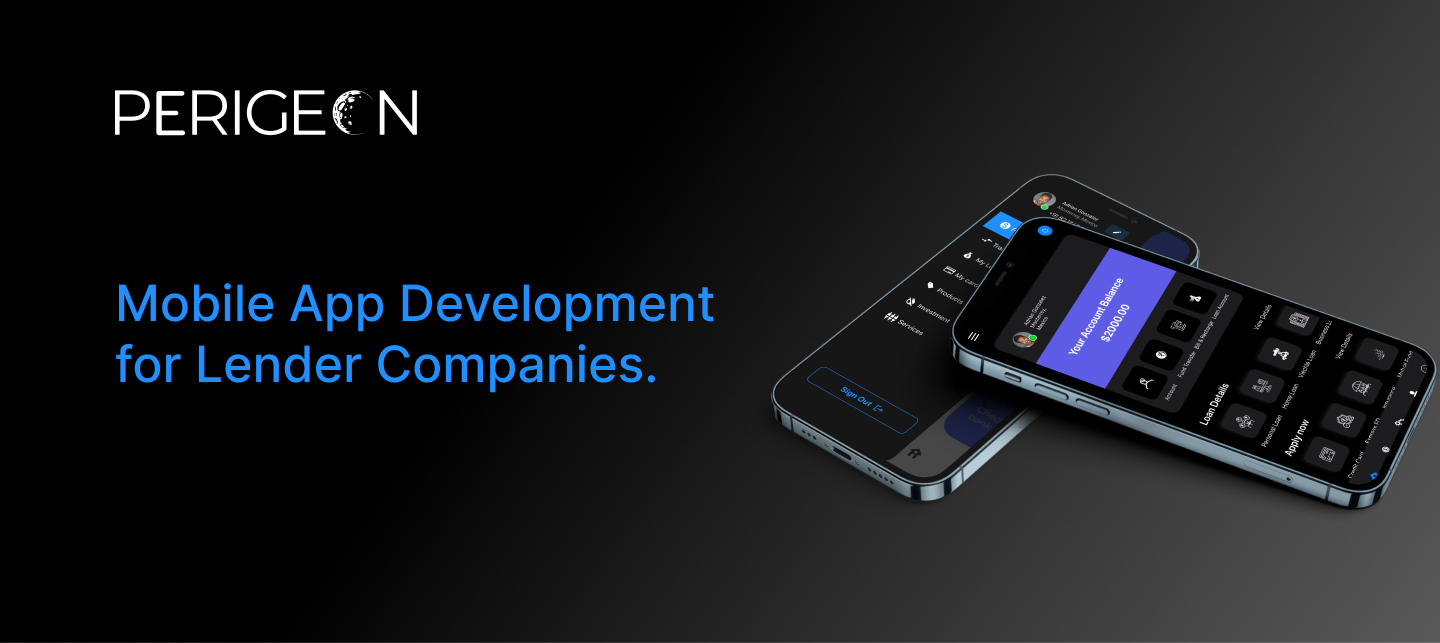
Mobile App Development for Lender Companies: Key Features and Best Practices
In the financial services industry, lender companies are increasingly turning to mobile app development to streamline their operations, improve customer experience, and stay competitive. Mobile apps offer a convenient and efficient way for lenders to interact with customers, manage loans, and provide valuable services. In this blog post, we will explore the key features and best practices for developing a mobile app for a lender company, focusing on both Android app development and iOS app development.
Key Features of a Lender Mobile App
1. User-Friendly Interface
A user-friendly interface is crucial for any mobile app, especially for financial services. The app should have a clean, intuitive design that allows users to navigate easily. Key functions such as loan application, account management, and customer support should be accessible within a few taps, whether through Android app development or iOS app development.
2. Secure Authentication
Security is a top priority for lender apps. Implementing secure authentication methods, such as biometric verification (fingerprint or facial recognition) and multi-factor authentication (MFA), helps protect user data and prevent unauthorized access. Both Android and iOS platforms offer robust security features that can be leveraged during app development.
3. Loan Application and Management
A core feature of a lender app is the ability to apply for loans. The app should guide users through the loan application process, allowing them to upload necessary documents, check their eligibility, and track the status of their applications. Additionally, users should be able to manage their existing loans, view payment schedules, and make payments directly through the app, whether it’s an Android app or an iOS app.
4. Credit Score Monitoring
Providing users with tools to monitor their credit scores can enhance the value of the app. Integrating credit score tracking allows users to stay informed about their credit health and understand how their financial behavior affects their score. This feature should be available on both Android and iOS platforms.
5. In-App Notifications and Alerts
Timely notifications and alerts are essential for keeping users informed about their loan status, upcoming payments, and any changes to their accounts. Push notifications can also be used to remind users of important deadlines and promotional offers. Effective use of push notifications can enhance user engagement in both Android and iOS apps.
6. Customer Support
Offering robust customer support within the app can significantly improve user satisfaction. Features like live chat, chatbots, and direct call options ensure that users can get help quickly when they encounter issues or have questions. This is crucial for both Android app development and iOS app development.
7. Document Management
A document management system allows users to upload, view, and manage their documents securely. This feature is particularly useful during the loan application process, where users need to submit various financial documents. Ensuring seamless document management is vital for both Android and iOS apps.
8. Payment Gateway Integration
Integrating a secure payment gateway enables users to make loan payments directly through the app. The payment process should be straightforward, offering multiple payment methods such as bank transfers, credit/debit cards, and digital wallets. This is an essential feature for both Android app development and iOS app development.
9. Financial Planning Tools
Providing financial planning tools, such as loan calculators, budgeting tools, and savings planners, can help users make informed decisions about their finances. These tools add value to the app and encourage users to engage with it more frequently. Including these tools is important for both Android and iOS platforms.
10. Personalization
Personalizing the user experience based on individual preferences and behavior can enhance user engagement. Features like personalized loan offers, tailored financial advice, and customized dashboards make the app more relevant to each user. Personalization should be a focus in both Android app development and iOS app development.
Best Practices for Developing a Lender Mobile App
1. Prioritize Security and Compliance
Ensuring the security of user data and compliance with financial regulations is paramount. Implement strong encryption, secure authentication, and regular security audits to protect sensitive information. Additionally, ensure that the app complies with relevant regulations such as GDPR, CCPA, and industry-specific standards. This is critical for both Android app development and iOS app development.
2. Focus on User Experience (UX)
A positive user experience is critical for the success of any mobile app. Conduct thorough user research and usability testing to understand the needs and preferences of your target audience. Use this information to design an intuitive and engaging app that meets user expectations, whether developing for Android or iOS.
3. Choose the Right Technology Stack
Selecting the appropriate technology stack is essential for developing a robust and scalable app. Consider using cross-platform development frameworks like Flutter or React Native to reduce development time and costs while ensuring a consistent user experience across different platforms. This approach benefits both Android app development and iOS app development.
4. Implement Agile Development
Adopting an agile development approach allows for flexibility and continuous improvement. Agile methodologies enable iterative development, regular feedback, and quick adaptation to changing requirements, ensuring that the app evolves with user needs and market trends. Agile practices are beneficial for both Android and iOS app development.
5. Provide Continuous Support and Updates
Launching the app is just the beginning. Regular updates and continuous support are crucial for maintaining the app’s performance, security, and relevance. Address user feedback, fix bugs, and add new features to keep the app competitive and user-friendly. Continuous support is essential for both Android and iOS apps.
6. Leverage Data Analytics
Integrating data analytics tools helps you understand user behavior and app performance. Use this data to make informed decisions about feature enhancements, marketing strategies, and overall app improvements. Data analytics should be utilized in both Android app development and iOS app development.
7. Test Thoroughly
Comprehensive testing is vital to ensure the app functions correctly and provides a seamless user experience. Conduct various tests, including functional testing, security testing, performance testing, and user acceptance testing, to identify and resolve any issues before launch. Thorough testing is necessary for both Android and iOS apps.
Conclusion
Developing a mobile app for a lender company involves incorporating essential features that enhance user experience, ensure security, and provide valuable financial services. By following best practices such as prioritizing security, focusing on UX, and adopting agile development, you can create a successful and competitive lending app. Whether focusing on Android app development or iOS app development, embracing the potential of mobile technology offers your customers a convenient, efficient, and engaging way to manage their loans and financial health.








 CPQ
CPQ 













